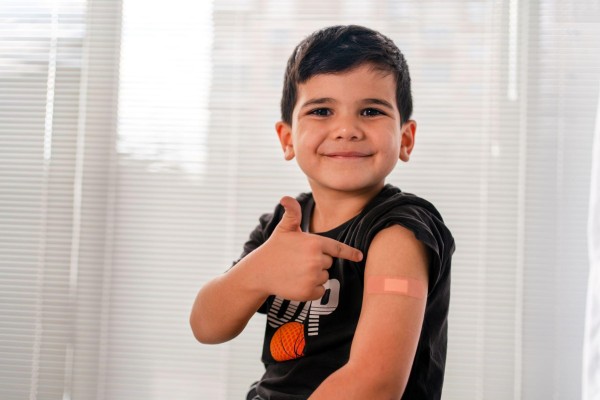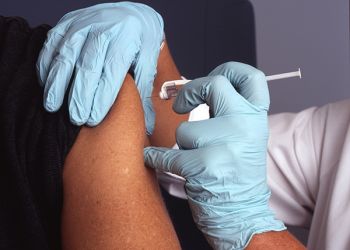In September 2022 and January 2023, the Centers for Disease Control and Prevention (CDC) released the findings from the National Immunization Survey (NIS) Teen and Child. The NIS is sponsored and conducted by the CDC and National Center for Immunization and Respiratory Diseases (NCRID). NIS have been conducted annually since 1994, when it originated to assess vaccination coverage after measles outbreaks that occurred. The NIS data is collected from phone surveys that monitor vaccination coverage among children 19-35 months and teens 13-17 years. Along with the NIS data, an additional report was released by the CDC that analyzes state and local vaccine coverage and exemption data among children in kindergarten.
The NIS-Child measures coverage of the following recommended vaccinations:
- Diphtheria and tetanus toxoids and acellular pertussis vaccine (DTaP/DT/DTP)
- Poliovirus vaccine (Polio)
- Measles or Measles-Mumps-Rubella vaccine (MMR)
- Haemophilus influenzae type b vaccine (Hib)
- Hepatitis B vaccine (HepB)
- Varicella zoster (chickenpox) vaccine (VAR)
- Pneumococcal conjugate vaccine (PCV)
- Rotavirus vaccine (ROT)
- Hepatitis A vaccine (HepA)
- Influenza vaccine (Flu)
The NIS-Teen includes coverage of the following routine adolescent vaccines:
- Tetanus, diphtheria, acellular pertussis (Tdap)
- Meningococcal conjugate (MenACWY)
- Human papillomavirus (HPV)
- Influenza vaccine (Flu)
Key Findings:
Vaccination Coverage with Selected Vaccines and Exemption Rates Among Children in Kindergarten – United States, 2021-22 School Year
- MMR coverage among kindergarten students continued to be below the Healthy People 2030 target of 95% for the second consecutive year. The coverage for each recommended vaccine was approximately 93%, leaving nearly 250,000 kindergarteners un-or under-vaccinated.
- 2.6% of kindergarteners had an exemption, 0.2% medical and 2.3% nonmedical, compared with 2.2% reported during the 2020-21 year.
- Thirty states reported lingering COVID-19 related impacts on vaccination coverage. The impacts include reduced access to vaccination appointments and local or school level extensions of grace period or provisional enrollment policies.
Vaccination Coverage by Age 24 Months Among Children Born During 2018–2019 — National Immunization Survey–Child, United States, 2019–2021
- Lower coverage was found among children living below the federal poverty level, without private health insurance, and in rural areas.
- A recent report estimated that, depending on the vaccine, 6.5%–31.3% of non-vaccination among children could be attributed to parental hesitancy.
Racial and Ethnic Differences in COVID-19 Vaccination Coverage Among Children and Adolescents Aged 5–17 Years and Parental Intent to Vaccinate Their Children — National Immunization Survey–Child COVID Module, United States, December 2020–September 2022
- COVID-19 vaccine coverage in Black children aged 5–11 years was 4.0 to 33.6 percentage points lower than that among Asian, Hispanic, and other/multiple race children of the same age.
- Less than one half of Black and Hispanic parents expressed confidence in the COVID-19 vaccine safety.
National Vaccination Coverage Among Adolescents Aged 13–17 Years — National Immunization Survey-Teen, United States, 2021
- Coverage with MenACWY, HPV vaccine, and 2 or more HepA doses was lower among adolescents living in nonmetropolitan statistical areas (non-MSAs) than among those living in MSA principal cities.
Implications for Public Health Practice
While all these data were reported on the national level, states have access to their state level data as well. Utilizing this new data can help local health departments to prioritize populations with low vaccination coverage. As we see from the national level data, disparities exist within age groups and though some demographic groups may be up to date on their routine immunizations, it is essential that all children and teens get caught up. Local health departments can use this data to:
- Identify and prioritize communities with low vaccination rates and ensure they have equitable access to vaccination
- Partner with schools to enforce school vaccination requirements, hold school-based vaccination clinics, and follow-up with under-vaccinated students by school nurses
- Utilize the immunization information system and other reminder recall systems to inform un/under-vaccinated children, teens, and their parents or guardians of needed vaccines
- Train and support community members and providers to serve as trusted messengers to advocate for vaccination among parents of unvaccinated children and adolescents and tailor messages to strengthen confidence in vaccine safety
- Educate their communities to ensure those eligible for the Vaccine for Children Program (VFC) know how to utilize and access the benefits.
NACCHO hosted a webinar with CDC discussing more in-depth results of these assessments and additional implications for local public health. You can view the recording of that webinar here.



